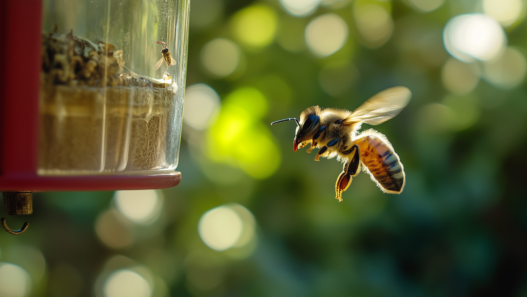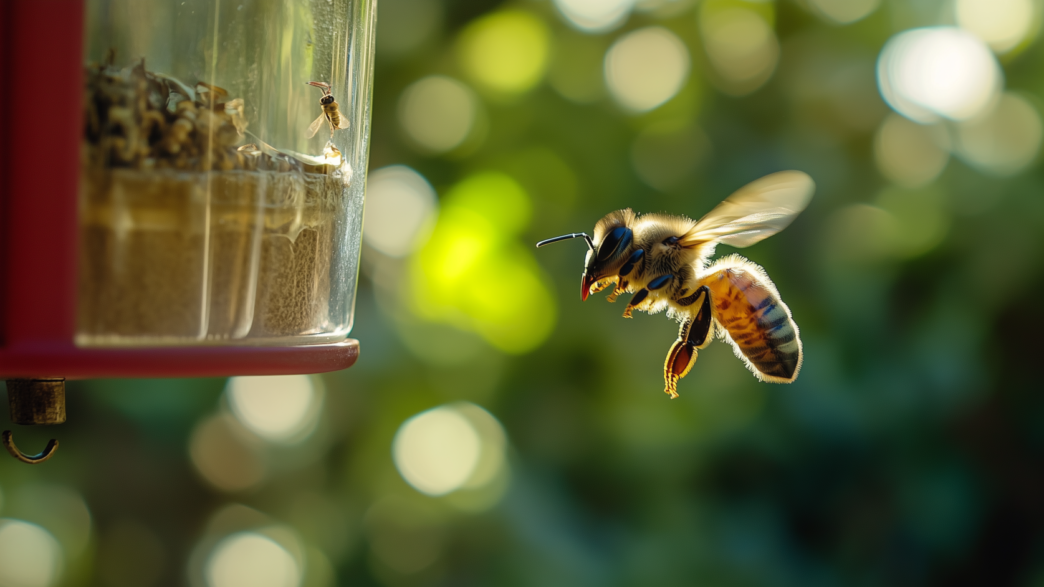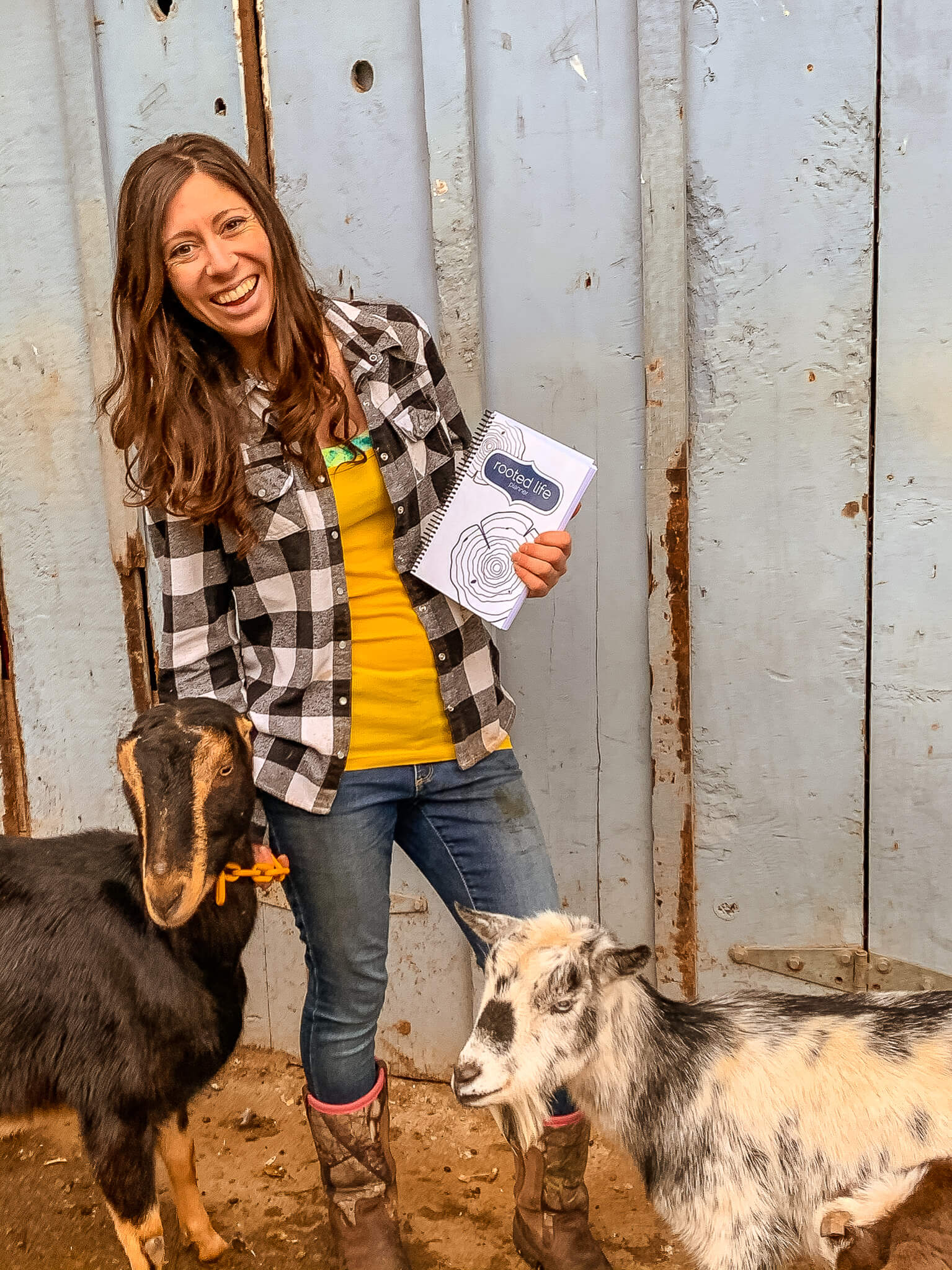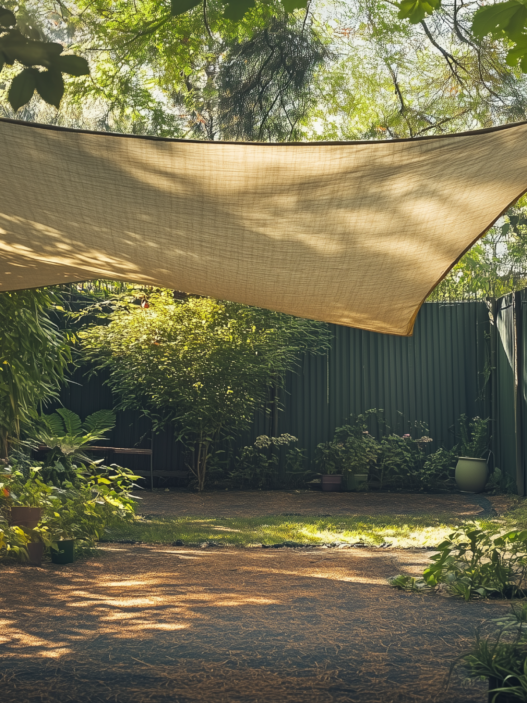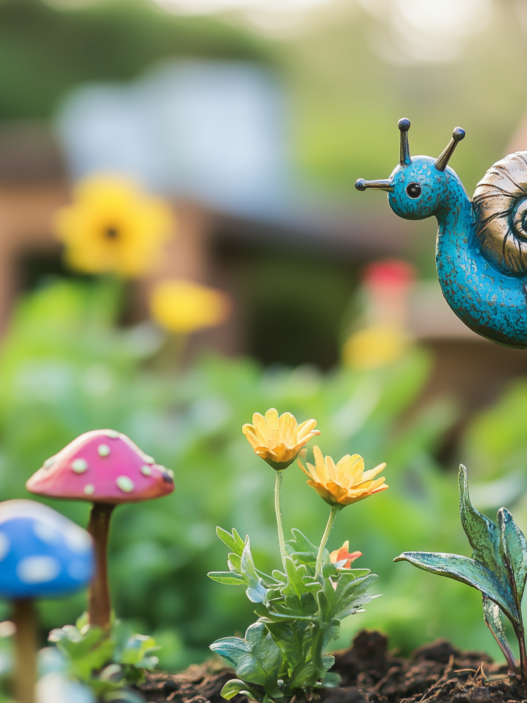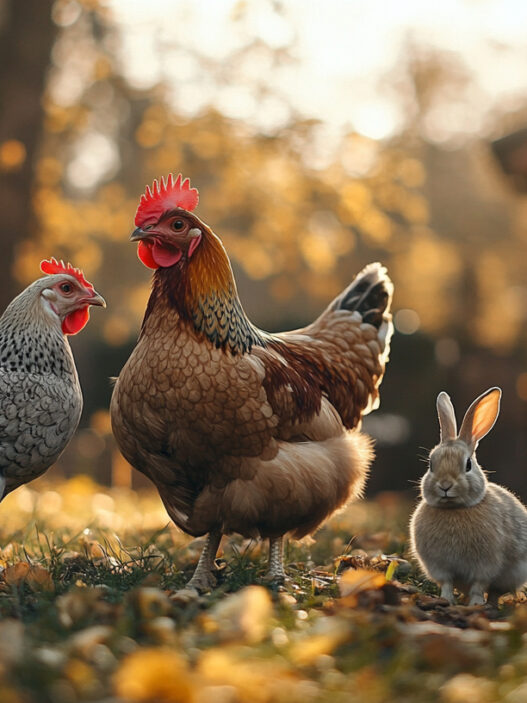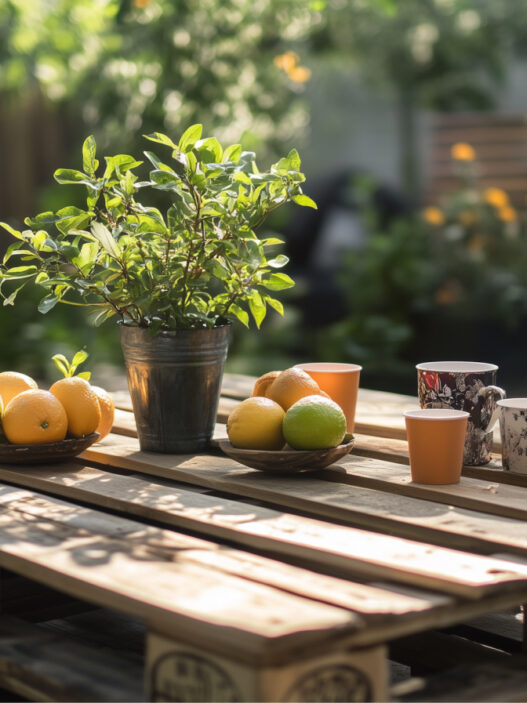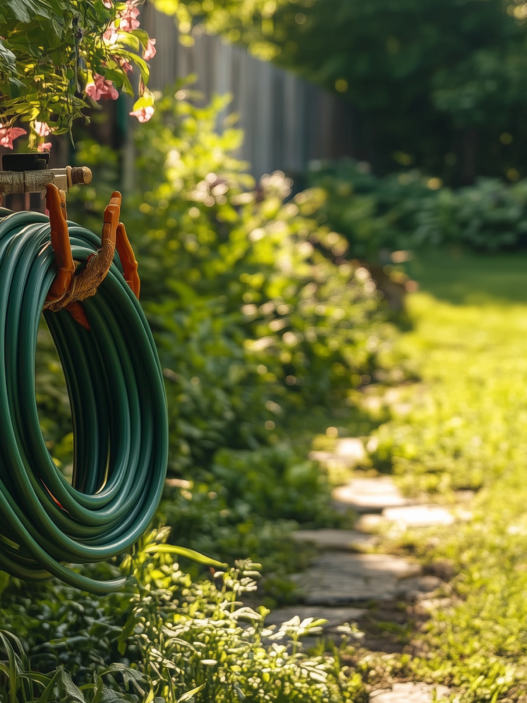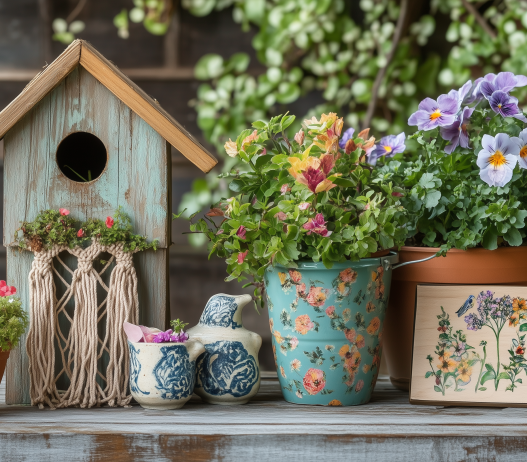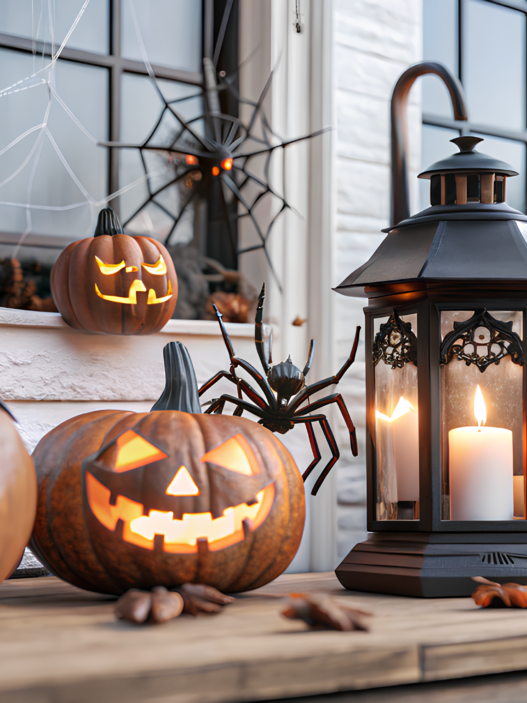Getting bees was a good decision. However, we had to spend a whole season trying to learn how to handle them. Bees are like neighbors we’ve introduced to ourselves! We had to organize decent accommodation and, not least, food for them. At first, we thought, “Hey, they’ll sort themselves out, won’t they?” But not really. By the end of the season, we realized how important it is to keep our bees fed with the right food at the right time. Cold weather, for example, is especially dangerous for bees. In short, there was a lot of information accumulated. So here’s a guide to making a bee feeder, as well as some tried-and-true bee forage recipes.
Why Feeding Bees is Essential (Especially in Fall and Winter)
Let’s start with the basics—why do bees need extra food? Isn’t nature supposed to take care of that? Well, yes and no. In the wild, bees have access to diverse foraging options, but in many areas, those resources dwindle as fall rolls around. And winter? Forget it. Without enough stored honey or supplemental feeding, bees can actually starve.
Feeding bees in the fall gives them a much-needed boost, helping them stock up on energy before the cold sets in. And feeding honey bees in winter? It can mean the difference between a thriving hive and one that doesn’t make it to spring. Studies have shown that bees consume more stored honey in colder months, which means if their stores are low, they’ll need a bit of help from you.
DIY Bee Feeders: Simple Projects for Every Season
We’ve tried our hand at a few different DIY bee feeders over the years. Our first bee feeder–let’s just say it wasn’t exactly bee-friendly. But after some trial and error, we’ve found a few designs that really work.
Frame Bee Feeder
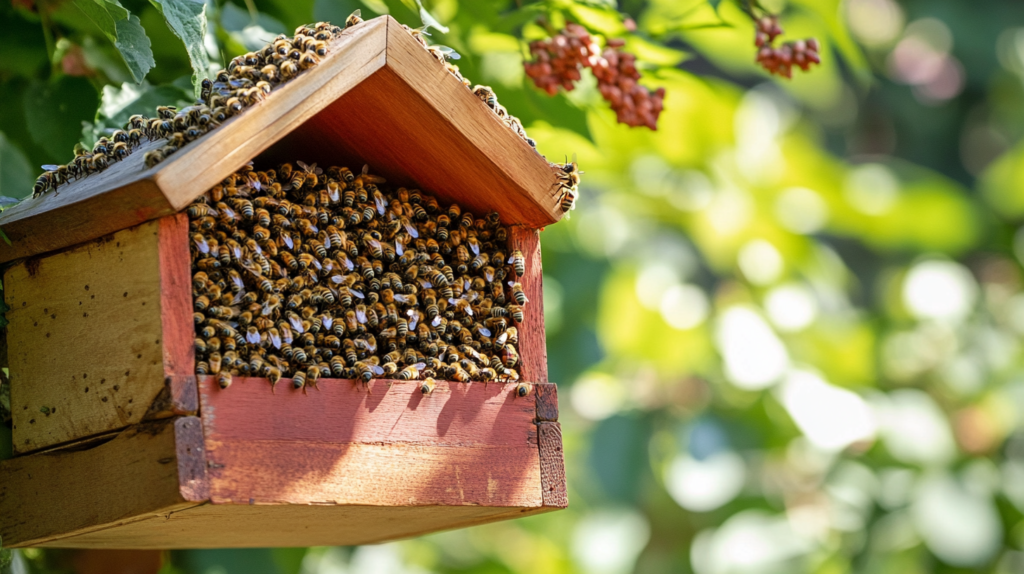
One of our favorites is the frame bee feeder. This one’s perfect because it fits right inside the hive, making it super easy for the bees to access. Here’s how you can make one:
- Materials Needed
A shallow frame (like the ones used for honeycomb), some fine mesh, and a bit of wood glue. - Instructions
Cut the mesh to fit inside the frame, glue it in place, and voila! You’ve got yourself a frame feeder. Fill it with your homemade bee feed, and slide it into the hive.
This design keeps the feed close to the bees, so they don’t have to travel far to get their nourishment, especially when it’s cold out.
Jar Bee Feeder
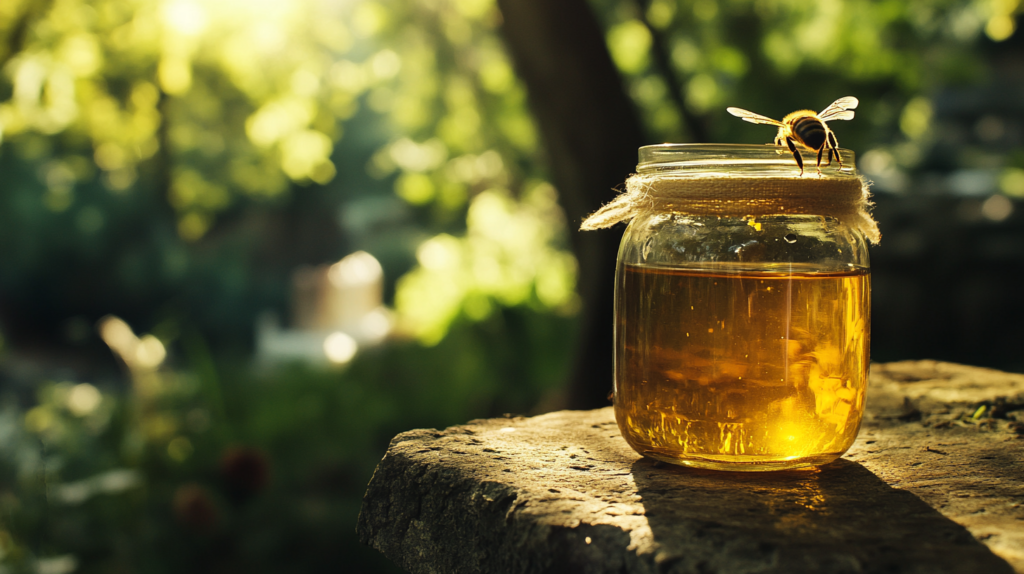
Another simple DIY option is the jar feeder. This one is great if you’re just getting started or need a quick fix.
- Materials Needed
A mason jar with a metal lid, a small drill bit, and a shallow dish. - Instructions
Drill a few tiny holes in the lid of the jar, fill the jar with sugar syrup, screw the lid on tight, and place it upside down in the dish. The bees can access the syrup through the holes, but it won’t drip out too quickly.
This feeder is particularly handy during the summer or early fall when the bees are still active but need a little extra energy. For more DIY tips, check out this category.
Recipes for Bee Feed: What to Feed Bees in Each Season
We’ve experimented with a lot of different bee feed recipes. Some worked, some…not so much. But through all of it, we’ve found a few recipes that our bees love—and that keep them healthy and strong.
I coordinated all of these recipes with material I once found on Agriculture Victoria – I liked the scientific approach and research behind their findings.
Summer Bee Feed Recipe
Summer feeding is all about keeping your bees energized without overwhelming them with too much sugar.
Ingredients:
- 1 part white sugar
- 1 part water
Instructions: Heat the water until it’s just warm (not boiling!), then stir in the sugar until it’s fully dissolved. Let it cool before feeding it to your bees. This light syrup is perfect for summer, when bees are still foraging but might need a little extra boost during dry spells.
Fall Bee Feed Recipe
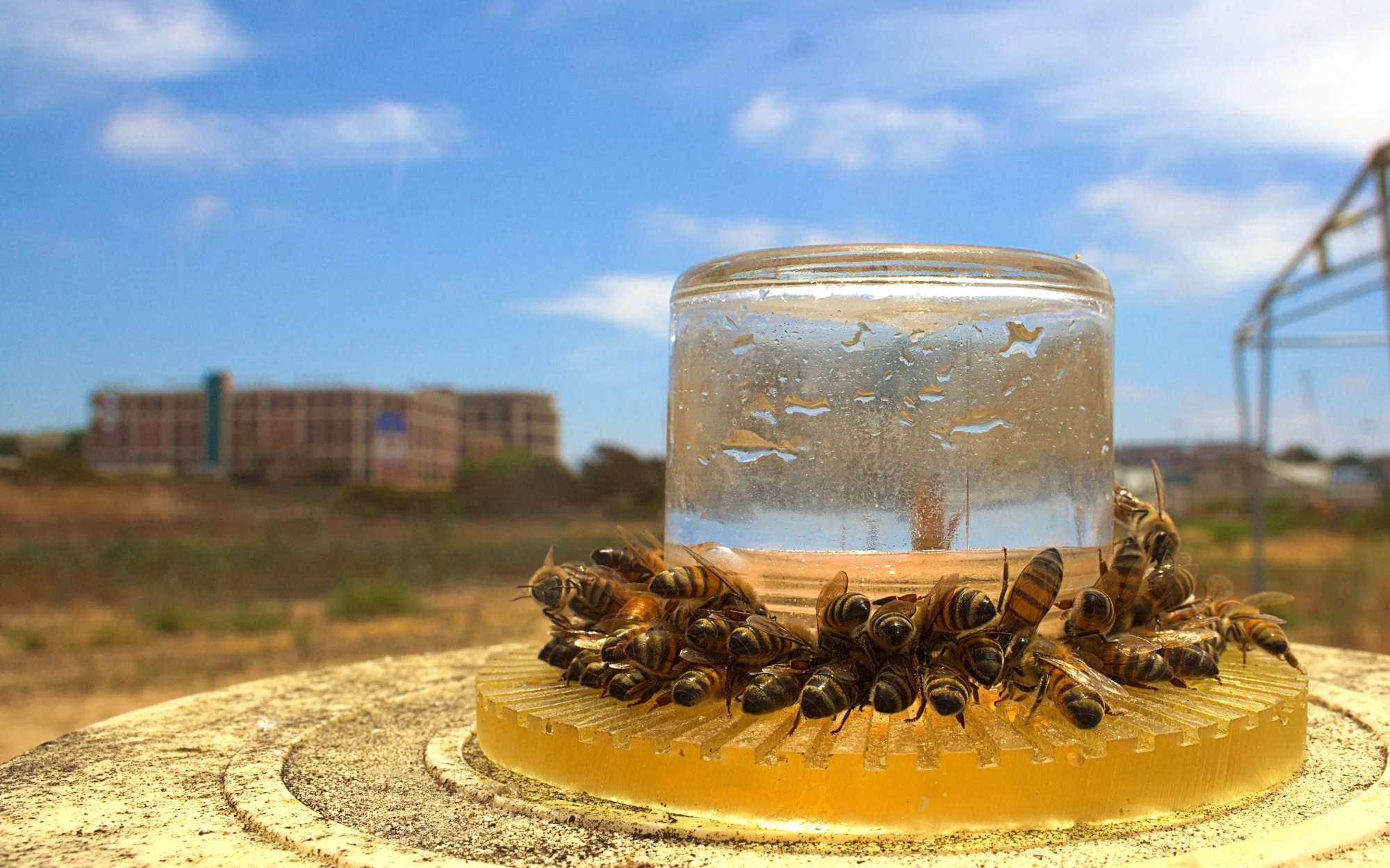
As the weather cools down, your bees will need something a bit heartier to help them build up their stores.
Ingredients:
- 2 parts white sugar
- 1 part water
Instructions: Warm the water and dissolve the sugar, then let it cool. This thicker syrup mimics the consistency of nectar and helps the bees store more energy for the winter months ahead. Check out this guide on seasonal hive management for more tips on preparing your bees for the cold.
Winter Bee Feed Recipe

Winter feeding is critical. Your bees can’t fly out to forage, so they’ll rely on what’s in the hive. This recipe is a bit different, designed to provide long-lasting nourishment.
Ingredients:
- 4 parts white sugar
- 1 part water
- A pinch of salt
- A teaspoon of apple cider vinegar
Instructions: Mix the ingredients into a thick paste or candy. This can be formed into patties or poured onto a candy board, which you can place inside the hive. The salt and vinegar help with digestion and provide essential minerals.
When and How to Feed Bees: Timing is Everything
One of the biggest lessons we’ve learned? Timing is everything when it comes to feeding bees. Start too late in the fall, and your bees might not have enough time to store the food. Feed too much in the summer, and you could encourage unwanted pests. Here’s what we’ve figured out:
Fall Feeding Schedule
Begin feeding in early September. This gives your bees enough time to convert the syrup into honey before it gets too cold. We aim to stop feeding by late October, depending on the weather.
Winter Feeding Tips
During the winter, you don’t need to feed your bees continuously. Monitor the hive’s weight by gently lifting it—if it feels light, it’s time to add more feed. Also, don’t overfeed. Bees need to cluster together to stay warm, and too much liquid feed can disrupt that process.
Summer Feeding
Summer feeding is mostly for times of drought or dearth when natural nectar sources are scarce. Just remember, bees prefer to forage, so only feed when absolutely necessary.
Bees Will Say You “Thanks!”
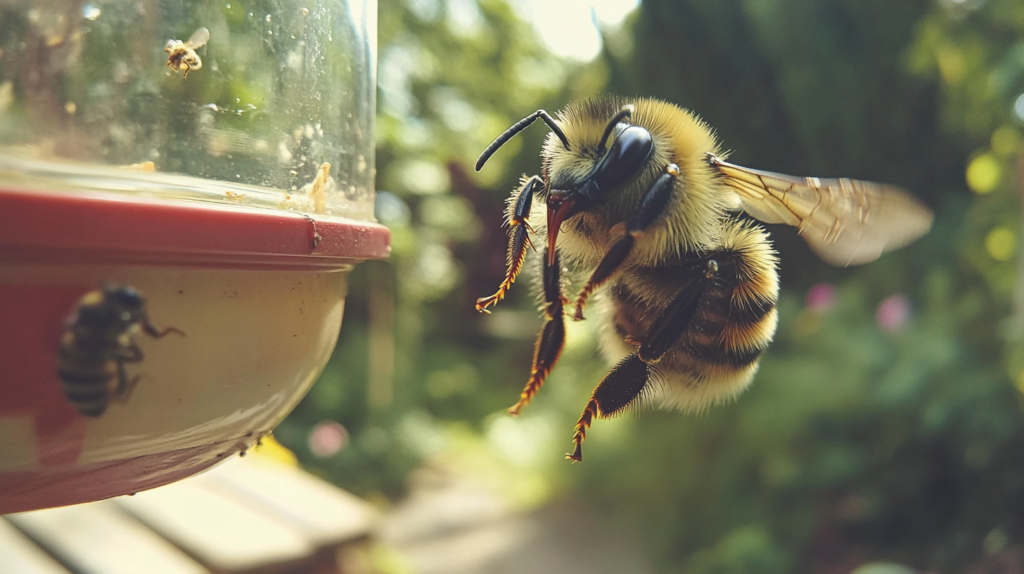
Alright, that’s the scoop on feeding bees throughout the year! I’d love to hear your experiences—what recipes have worked for your bees? Any DIY feeder successes or disasters? Let’s chat in the comments below!
